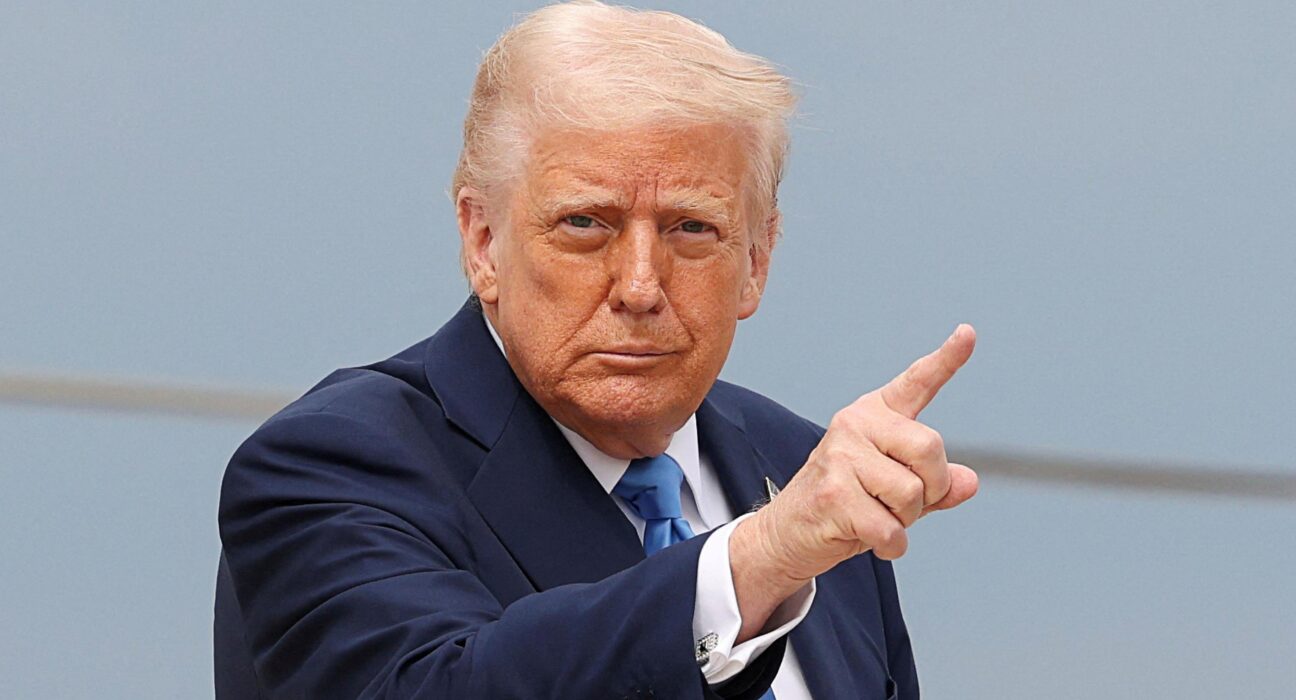Donald Trump’s return to the U.S. presidency in January 2025 has reignited global discussions about trade policies, particularly his aggressive stance on tariffs. For Kenya, a nation heavily reliant on exports to the United States and imports from global markets, these policies could ripple through the economy, influencing the prices of goods, inflation rates, and livelihoods. As of April 2, 2025, Trump’s proposed reciprocal tariffs—set to match U.S. levies on Kenyan goods with Kenya’s tariffs on U.S. goods—and additional trade measures targeting countries like China, Canada, and Mexico are poised to reshape trade dynamics. This article explores how these tariff policies will affect Kenya, integrating high-ranking keywords like “Trump tariffs 2025,” “Kenya economy,” “export prices Kenya,” and “global trade impact” to provide a detailed, SEO-optimized guide for Kenyan businesses and consumers.
With Kenya’s economy tied to agricultural exports like tea, coffee, and flowers, and its reliance on imported goods such as electronics and machinery, understanding the implications of Trump’s tariff agenda is critical. This piece breaks down the mechanisms of tariffs, their direct and indirect effects on Kenyan prices, and strategies to mitigate the fallout—all tailored to the current date of April 2, 2025, as Trump’s policies take effect.
What Are Trump’s Tariff Policies in 2025?
Trump’s tariff policies for his second term build on his “America First” philosophy, emphasizing protectionism to boost U.S. manufacturing and reduce trade deficits. As of April 2, 2025, key measures include:
- Reciprocal Tariffs: Announced on February 13, 2025, and effective today, these tariffs aim to mirror the duties other countries impose on U.S. goods. For Kenya, which applies 15-25% tariffs on U.S. imports, this could mean a 15% tariff on Kenyan exports to the U.S.
- Tariffs on Major Trading Partners: A 25% tariff on goods from Canada and Mexico, a 10% tariff on Chinese imports (with threats of up to 60%), and a 25% levy on Venezuelan oil purchases affect global supply chains Kenya relies on.
- Sector-Specific Threats: Trump has floated a 200% tariff on imported cars and additional duties on agricultural goods, potentially impacting Kenya’s trade partners and import costs.
These policies, rooted in Trump’s first-term trade wars (2018-2019), aim to pressure countries into concessions on issues like immigration and drug trafficking. However, economists warn that such broad tariffs could spark retaliation, disrupt global trade, and raise prices worldwide—including in Kenya.
How Tariffs Work: A Primer for Kenyan Readers
To grasp the impact on Kenya, it’s essential to understand tariffs. A tariff is a tax imposed by a government on imported or exported goods. In Trump’s case:
- Who Pays?: U.S. importers (e.g., companies buying Kenyan tea) pay the tariff, not Kenya directly. These costs are often passed to U.S. consumers or absorbed by reducing profit margins.
- Purpose: Tariffs protect domestic industries by making foreign goods pricier, generate government revenue, or serve as leverage in negotiations.
- Ripple Effects: Higher costs in one country can disrupt supply chains, trigger retaliatory tariffs, or shift trade patterns globally.
For Kenya, the interplay between Trump’s tariffs on its exports and the indirect effects on its imports will determine price changes in 2025.
Direct Impact on Kenyan Exports to the U.S.
The U.S. is Kenya’s third-largest export market, accounting for $835 million in 2024, per the Kenya National Bureau of Statistics (KNBS). Key exports include:
- Flowers ($835M): Kenya supplies 38% of U.S. cut flower imports. A 15% tariff could raise prices from $1 per stem to $1.15, potentially reducing demand as U.S. consumers opt for cheaper alternatives from Colombia or Ecuador.
- Coffee ($73M): With the U.S. consuming 25% of Kenya’s coffee exports, a tariff could cut profit margins for farmers in Nyeri and Kiambu, dropping farm-gate prices from Ksh 80 to Ksh 70 per kilo if demand dips.
- Tea ($4.42M): Though a smaller share, tea exports to the U.S. face similar risks, with prices potentially rising from $2.50 to $2.88 per kilo, affecting competitiveness against Indian or Sri Lankan tea.
Economic Consequences
- Revenue Loss: A 10% drop in U.S. demand could cost Kenya $83.5 million annually, hitting the agricultural sector hardest.
- Job Risks: Over 500,000 jobs in horticulture and 200,000 in coffee could face wage cuts or layoffs if exporters scale back.
- Shilling Pressure: Reduced dollar inflows may weaken the Kenyan shilling, currently at Ksh 130 to the dollar, driving up import costs.
Indirect Impact via Global Supply Chains
Kenya imports $20 billion worth of goods annually, with China (20%), India (10%), and the UAE (8%) as top partners. Trump’s tariffs on these countries will indirectly affect Kenyan prices:
1. China’s Role in Kenyan Imports
- Goods Affected: Electronics (phones, TVs), machinery, and textiles from China face a 10% U.S. tariff, with threats of 60%. If China retaliates or shifts production, Kenyan importers could see:
- Price Hikes: A smartphone costing Ksh 15,000 might rise to Ksh 16,500 (10% increase) if Chinese exporters pass on costs.
- Supply Shortages: Diversion of goods to non-U.S. markets could delay shipments to Kenya.
- Currency Dynamics: China may devalue the yuan to offset U.S. tariffs, as it did in 2018 (10% drop). A weaker yuan could make Chinese goods cheaper temporarily, but retaliatory tariffs from other nations might negate this.
2. Oil and Energy Costs
- Venezuela Tariffs: Trump’s 25% tariff on Venezuelan oil buyers (effective April 2, 2025) targets India and China, key Kenyan oil suppliers. If they pass on costs, Kenya’s fuel prices could rise:
- Current Price: Ksh 180 per liter of petrol.
- Projected Increase: Ksh 198 per liter (10% hike), adding Ksh 1,800 monthly to a household with a 100-liter fuel budget.
- Transport Costs: Higher fuel prices will increase transportation costs, pushing up prices for goods like maize (from Ksh 50 to Ksh 55 per kilo).
3. Canada and Mexico Disruptions
- Wheat and Fertilizer: Kenya imports wheat from Canada ($50M) and fertilizer components via North American supply chains. A 25% U.S. tariff could:
- Raise Wheat Prices: From Ksh 60 to Ksh 75 per kilo, increasing bread costs by Ksh 5-10 per loaf.
- Fertilizer Costs: A 10% rise (Ksh 3,000 to Ksh 3,300 per bag) could reduce farmer yields, hiking food prices further.
Inflation and Cost of Living in Kenya
Trump’s tariffs could fuel inflation in Kenya, already at 6.5% in March 2025 (Central Bank of Kenya). Here’s how:
- Imported Inflation: Higher costs for electronics, fuel, and wheat will cascade to retail prices.
- Food Prices: Agriculture, 33% of Kenya’s GDP, faces dual pressure—lower export earnings and higher input costs—potentially raising unga prices from Ksh 150 to Ksh 165 per 2kg pack.
- Consumer Impact: A family spending Ksh 30,000 monthly on essentials might see costs rise to Ksh 33,000, a 10% hit to purchasing power.
The Central Bank may respond by raising interest rates (currently 10.75%) to curb inflation, increasing borrowing costs for businesses and consumers.
Retaliation Risks and Trade Shifts
Kenya’s response to U.S. tariffs could escalate tensions:
- Retaliatory Tariffs: If Kenya imposes counter-duties on U.S. goods (e.g., machinery, pharmaceuticals), prices for these imports could jump 15-25%.
- Trade Diversification: Kenya may pivot to the EU, China, or Middle East, but this shift takes time and infrastructure investment.
Globally, retaliatory tariffs from Canada, Mexico, and China on U.S. goods could flood alternative markets with cheaper products, offering Kenya temporary import relief but complicating long-term trade planning.
Sector-Specific Effects in Kenya
1. Agriculture
- Export Hit: Flowers, coffee, and tea face U.S. market shrinkage.
- Input Costs: Fertilizer and pesticide price hikes will squeeze margins.
2. Manufacturing
- Machinery Costs: A 10% rise in Chinese machinery prices (e.g., Ksh 1M to Ksh 1.1M per unit) could stall industrial growth.
- Competitiveness: Higher production costs may weaken Kenya’s edge in regional markets.
3. Retail and Consumer Goods
- Electronics: Phones and TVs will cost 10-15% more.
- Clothing: Textile imports from China could rise from Ksh 500 to Ksh 575 per item.
4. Transport and Logistics
- Fuel Impact: Higher diesel costs (Ksh 170 to Ksh 187 per liter) will raise matatu fares by Ksh 10-20 per trip.
Mitigation Strategies for Kenya
Kenya can cushion the blow of Trump’s tariffs with proactive measures:
- Boost Local Production:
- Subsidize fertilizer and machinery to reduce import reliance.
- Promote “Buy Kenya, Build Kenya” campaigns for electronics and textiles.
- Diversify Markets:
- Target EU flower markets (40% tariff-free under EBA) and Asia for tea and coffee.
- Leverage AfCFTA to boost intra-African trade.
- Negotiate with the U.S.:
- Seek exemptions under AGOA (expiring 2025) or bilateral talks to lower tariffs.
- Consumer Tips:
- Stockpile essentials like wheat and electronics before price hikes.
- Shift to local brands (e.g., Brookside milk over imported options).
Long-Term Implications for Kenya’s Economy
Trump’s tariffs could force Kenya to rethink its trade strategy:
- Economic Slowdown: A 1-2% GDP drop is possible if exports fall and inflation spikes.
- Shilling Volatility: A weaker shilling (Ksh 135-140) may persist without dollar inflows.
- Investment Shifts: Foreign investors may favor tariff-immune markets, slowing FDI growth.
Conversely, if Kenya adapts swiftly, it could emerge as a regional manufacturing hub, leveraging cheaper labor and new trade pacts.





